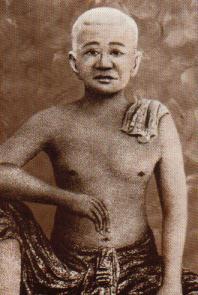The Captivating Stories Behind Thai Names
Contents
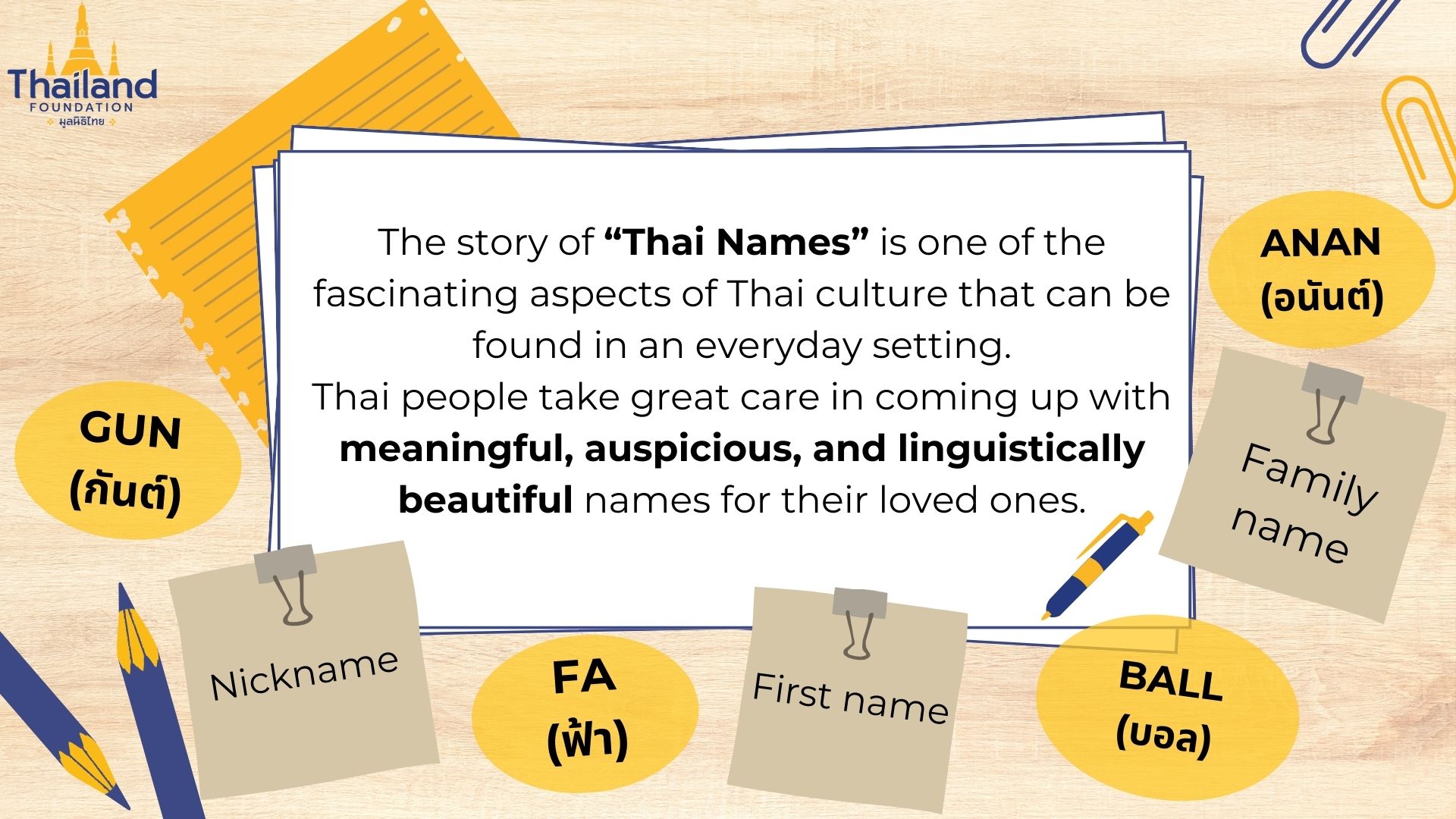
Each culture has its own way of assigning names to individuals, and Thai culture is no exception. Thai names have a rich and fascinating history that stretches back centuries. They reflect the values, beliefs, and traditions of the Thai people. Non-Thais encountering Thai people may, at first, be puzzled by the uniqueness of Thai names. Why are people referring to each other with nicknames? Why are some Thai surnames so long? How come some Thai names sound similar to Indian names?
In this article, we will help you understand Thai names. We will explain the basic composition of Thai names and present examples on the meanings of some popular names. We will also examine how beliefs and history came to shape the Thai people’s naming practices.
Composition of Thai Names
In Thai past, Thai people’s names were short and simple. Each person had one name, the meaning of which can be derived from a variety of sources. People can be named after objects, animals, plants, numbers, qualities, and more. As history progresses, names become more complicated (as well will discuss). With the introduction of Brahmanism-Hinduism and Buddhism in the region, most Thais incorporate Pali and Sanskrit into their names. Contact with the West also brought about the addition of surname into Thai laws.
Today, most Thai names are usually composed of a nickname, first name, and family name. While first names and surnames are considered “official names”, most Thai people go by their nick names in personal and informal setting. Unlike in many countries where nicknames may be given later in life, Thai nicknames are chosen by the parents and given at birth, often before the official name has been chosen and registered. Nicknames are short, with a variety of meanings and origins.

The first and last name is considered the formal and legal name for the individual. Thai first names are usually three to four syllables long and can be chosen based on their meanings, letters, or sound. Some people also compose names through choosing letters that are astrologically compatible to the day on which the child was born. Family names, also known as surnames, are usually longer and most of them are inherited from the father’s side of the family. Some surnames are able to indicate the family’s ethnic, social, and religious origins.
So, when addressing your Thai friends or Thai individuals you have been acquainted for a bit, it is normal to refer to them by their nicknames. First names come into play in situations such as formal settings, legal proceedings, showing respect to someone, or when engaging with someone you are not close with, among others. Ultimately, you will have to read the situation you are in to gage the level of comfortability in using nickname vs first name. Just keep in mind the different nature of each name. One point worth mentioning is that Thai people do not go by their last names. For example, Thai people would address a man named Somchai Wangdee (สมชาย หวังดี) as “Mr. Somchai” rather than “Mr. Wangdee.” Also in many cases, rather than using the honorifics “Mr.”, “Mrs.”, or “Ms.”, you might see Thai people using the Thai honorific “Khun” (คุณ) which can be used to address both sexes. So, in Somchai’s case, it would be “Khun Somchai.”
Nicknames
There is more significance to a nickname in Thailand than simply a shorter and easier to remember name. As mentioned before, Thai people’s names used to be short and simple, and this is where the root of nicknames seems to be derived from. In ancient times, such as during the Sukhothai period (1238–1438), babies were commonly named according to their birth order. For example, the name “Ngua” (งั่ว), found in names of some ancient kings, means “five” and could indicate that the person was the fifth child of the parents. Nicknames also evolved to describe a baby’s appearance, like fat (อ้วน), big (ใหญ่), small (เล็ก), and short (เตี้ย) being used. During the Ayutthaya era (1350-1767) it was also common for babies to be given names of desirable characteristics or items, like gold (ทอง), brave (กล้า), and adventurous (หาญ).
In later times, babies were given two names to confuse malevolent spirits who may want to steal the baby away or interfere with the person’s life. It was felt that by having two names, the spirits would be less likely to meddle in people’s affairs. Additionally, calling a child by an undesirable name, like pig (หมู), dog (หมา), or fat (อ้วน), was said to deter bad spirits from wanting to take the baby. Though this naming practice is no longer observed, is still customary today for people to refrain from commenting on, for example, how beautiful or cute a baby is for the same reasons. Therefore, it is not uncommon to see Thai people complementing on “how cute a baby is” by saying that it is “na klied na chang (น่าเกลียดน่าชัง),” meaning “so ugly” or “so hateable.”
Modern Thai nicknames can be derived from a variety of origins. Examples of inspirations for nicknames include: (1) the physical features of children, (2) the qualities parents want their children to possess, (3) the rank of birth of the child, (4) food or objects that parents like, (5) astrological calculations, (6) foreign words, (7) gender, (8) diminutives of given names or last names, (9) names of animals, and (10) names of plants, among others. Nicknames do not always have to be phonetic connected to the first name. For example, a Thai woman with the given name “Thanyamas” (ธัญญามาศ) can have the nickname “Nu” (หนู) meaning “mouse.” She would use the name Nu throughout her life both socially and professionally, in all but the most formal legal documents.
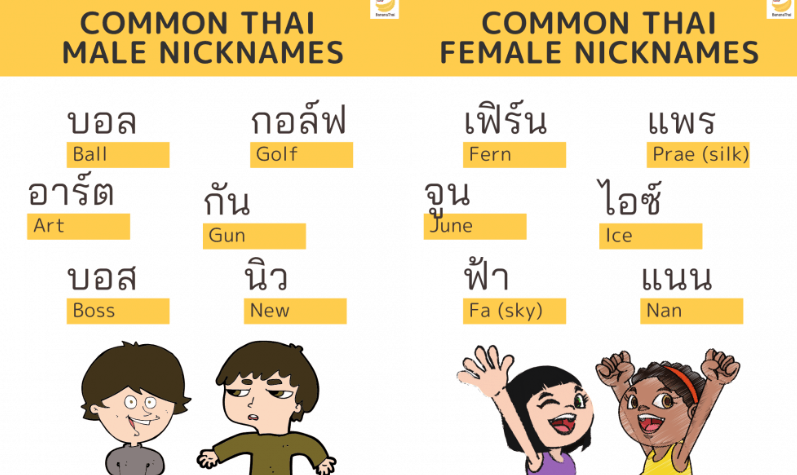
A 2013 research by Wongsantativanich quotes surveys from the Ministry of Culture on Thai nicknames. One survey was conducted on 1,014 students in a northern province in Thailand, revealing 597 students who possess nicknames of foreign origins, including: “Fluke” (ฟลุ๊ค), “Boss” (บอส), “Ice” (ไอซ์), “Dream” (ดรีม), “Cake” (เค้ก), “Knot” (น็อต), “Nut” (นัท), “Beam” (บีม), and “Film” (ฟิล์ม), among others. The other survey reveals that, among the top 10 names for boys born during 2006-2008, eight are of foreign origins, including: “Win” (วิน), “Ice” (ไอซ์), “Mickey” (มิคกี้), “Arm” (อาร์ม), “Boss”(บอส), “Sun” (ซัน), “Beam” (บีม), and “Best” (เบสท์). For girls, it is six out of ten names, including: “Mind” (มายด์), “Amy” (เอมี่), “Fern” (เฟิร์น), “Cream” (ครีม), “Focus” (โฟกัส), and “Mint” (มินต์) (Wongsantativanich, 2013). These survey seem to suggest a preference of foreign names, perhaps as a result globalization and the desire to capture modernness. In fact, this sentiment is captured in the famous song “Khun Lamyai” (คุณลำใย) by Looknok Suphaphorn, in which the singer complains of being called “Lamyai” (ลำใย), a traditional Thai name meaning “longan,” instead of having a more foreign-sounding or modern nickname.
Thai people may also gain additional nicknames as teens or adults, much as many Americans may shorten or change their name. For example, “William” goes by “Bill” or “Elizabeth” prefers “Bizzy.” This practice is common among Thai people who interact with Westerners frequently, especially if their Thai nickname sounds inappropriate to other cultures. For example, the famous director, Apichatpong Weerasethakul, could have an Americanized nickname “Joe,” derived from a Thai nickname “Jei” (เจ้ย). Similarly, a Thai boy with the nickname “Fuk” (ฟัก – the name for a species of Thai green pumpkin), may decide to select a new, more appropriate sounding nickname.
Ultimately, the choice of nicknames in today’s society is largely down to the personal preference of the parents. Some still use traditional naming conventions, while others choose nicknames based on what sounds pleasing to them. There are, as in many cultures, trends that some people follow, such as the use of foreign words for nicknames. Sometimes, families are unaware of the meanings of such words, simply choosing them because they sound interesting. On occasion, the nickname may actually be a short form of the official name. Thai nicknames are more than just a convenience or terms of endearment between family members and close friends but they are bound up in the traditional nature of Thainess and remain an important part of Thai culture.
First Name
A 2001 research by Siriwatananawin states that when the society was primitive, names contained monosyllabic Thai words. But when society was transformed into a more complex one, names became longer, having more loanwords (Siriwatananawin, 2001). According to Karnchaiphasa Naikarntangcheu Khong Khonthai (1984) by Na Bangchang, during the Sukhothai period, given names of both royal families and commoners were very simple while all the names were monosyllabic Thai words. Generally, they were names about kinship and the endeavor to build stability and prosperity of society. Na Bangchang argues that these ideas were based on the governing system of paternalism (Na Bangchang, 1984).
In the late Sukhothai and Early Ayutthaya period, Thai political governance became more influenced by Brahmanism-Hindu and Theravada Buddhism. The concept of devaraja, the idea that monarchs are earthly representation of deities who protect and look over the wellbeing of the people, became more prominent. Thai monarchs thus used more Pali (a Middle Indo-Aryan language associated with Theravada Buddhism) and Sanskrit (an ancient languages of India that are considered sacred) in their names to evoke religious association. Unlike the royal families, the Thai commoners still use simple Thai names. Their given names were mostly related to things in daily life (e.g. animals, flowers/plants, ores, colors) and actions. Names that reflected abstract concepts were rare, with exceptions like those about “boon” (บุญ), meaning merit in Buddhist ideology. Thais’ naming changes according to the development of Thai society.
During the reigns of King Rama IV (1851-1868) and King Rama V (1868-1910), the royal families used more Pali and Sanskrit and increased the number of syllables in their given names. They opted for names referring to power, dignity and honor. It is possible that nicknames were mostly used in the court around this time. Since their given names were long, they created nicknames that helped them address each other more easily. Interest in naming children according to astrological data also became popular, hence the growing number of people who started to consult monks and sages when choosing names. King Rama IV started to give family names to royal servants, with names being a part of status in Thailand.
Before Thailand transitioned from absolute monarchy to constitutional monarchy in 1932, commoners continued to use given names similar to those of the Ayutthaya period. After the transition, however, they began to adopt the court tradition of having long names due to the increasingly spreading idea of equality as a consequence of social change. They tend to choose names relating to power, dignity, and honor for boys, and names relating to charm and beauty for girls.
We searched a 2023 website article by Worth Start, and found list of some common Thai first names from foreigners’ perspective. Some of the names are:
- Paithoon (ไพฑูรย์): is a male name meaning “chrysoberyl”, also known as “cat’s eye”, a gemstone with auspicious meaning in Thai culture.
- Malee (มาลี): Malee is a female name which means ‘flower’. It is a straightforward and attractive name that can also reflect the beauty of an innocent newborn girl.
- Arthit (อาทิตย์): is a male name derived from the name of the Sun God. The name also reflects persistence, hard work, and strength.
- Somchai (สมชาย): is a common Thai male name that has an impactful appearance relating to chivalry and manliness.
- Preeda (ปรีดา): is usually given to a female child to be joyous in the future. The meaning of the name is “joy”.” Some people may suggest this name to Thai babies, seeing them smiling innocently.
- Duangkamol (ดวงกมล): technically is a unisex name. Whether it is singing, dancing, or having a simple conversation, the gestures that come from the core of the heart are worth more than a million-dollar. It is more authentic and less artificial. This is what the name “Duangkamol” suggests.
- Anong (อนงค์): a typical Thai feminine name with a clear and straightforward meaning. “Anong” is derived from the Thai word “gorgeous.” It is considered one of the most common and widespread Thai female names. (Rafique, 2023)
In summary, Thai names became longer and more complex over time through religious and social changes. Eventually, the name split into two: 1) longer first name used for formal and legal setting and 2) Short and simpler nicknames used for informal and day-to-day setting as opposed.
Surnames
While first names and nicknames have a long history, Thai surnames are a much more recent phenomenon. Another aspect of Thai surname is that women adopt their husband’s family name after marriage. Dating back to 1913, the Thai Nationality Act (also known as the Surname Act) was passed, requiring all Thai permanent residents to have surnames for the first time. Because surnames were uncommon before this law, many families simply made up a name. Understandably, they selected words with meanings that would reflect well on the family. Thai royalty can also bestow honorary surnames to families which are simply tacked onto the existing surname.

Cr. www.bbc.com
The Thai Nationality Act also required that each surname be unique. Families registered their chosen surname with the government, but had to alter it if the name they wanted was already in the registry. For example, if “Jaturapattara” (จตุรภัทร) is already registered, a family may choose something similar like “Jaturapattarapong” (จตุรภัทรพงศ์) instead. Some overlap of Thai surnames does, however, exist because technology was not advanced enough at the time the registry was created. Regardless, Thai names are still much more unique than names in most other languages. If two Thai people share a last name, they are very likely to be at least distantly related.
Today, new Thai citizens still must register a unique surname, but they can no longer be as long. In 1962, the Person Name Act was passed, limiting the length of new Thai names. To register a new name, it may not have more than ten Thai letters, excluding vowel symbols and diacritics. Although, any royally-conferred titles and surnames may exceed the ten-character limit.
Thai surnames are exciting and often reveal something about a person’s ancestry or background. Derivation of Thai surnames came from the ancestors’ names, places of residence or professions. In Thailand, your surname is an integral part of your identity. It can indicate your family’s social status, religion, and geographic origin. For example, surnames like “Amatyakul” (อมาตยกุล) indicate connection to nobility, while surnames like “Ransibrahmanakul” (รังสิพราหมณกุล) and “Buranasiri” (บุรณศิริ) can indicate Brahmin ancestry.
Not all Thai surnames have to be of purely Thai ancestry. One well-known surname is the “Bunnag” (บุนนาค) family which was a powerful Siamese noble family of Mon-Persian descent influential during the late Ayutthaya Kingdom (1767) and early Rattanakosin period (1782-1851). The Bunnag family became involved in Thai politics and later served as key advisors to various Siamese rulers. The surname is still considered well known in Thai society nowadays.
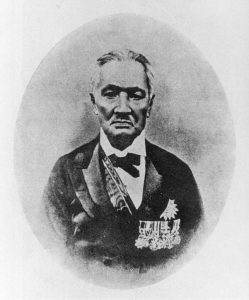
Having a registered Thai surname was also required of the large Chinese population that lived in Thailand in the early 20th-century. Initially, many chose to use their Chinese surname preceded by the word “sae” (แซ่), Thai for “surname.” The requirement that each family have a unique name, however, meant that any Chinese family with a common name would have to add additional components. Some may also choose Thai words that are similar-sounding to their Chinese surnames and add more words to it.
Some, register their last names by keeping the original meanings of their original Chinese surnames and they use the longer Thai surnames to avoid the repetition with other Chinese. For example, the Former Thai Prime Minister, Banharn Silpa-archa’s (บรรหาร ศิลปะอาชา) surname has the word “archa” (อาชา) in it. It means “horse” in Thai and is a nod to his Chinese surname “Ma” (馬), which also means “horse.” All these practices can lead to Thai-Chinese surnames becoming lengthy. Many of them registered mostly 5 syllable surnames and some who registered later may registered 6 to 8 syllable surnames. Many of the long Thai last names seen today belong to people with Chinese-Thai ancestry such as Archapongwattana (อาชาพงศ์วัฒนา), Limratanamongkol (ลิ่มรัตนะมงคล), and Jongboonyaupap (จงบุญญานุภาพ).
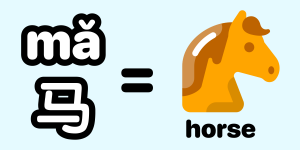
Cr. chinesetones.app
Thai royals usually have surnames of 3 to 4 syllables same as normal Thai surnames, but it is a bit special for Thai royals to have longer surnames when their bloodlines ended as commoners. Thailand has 3 levels of prince/princess that consist of: Chao Fa (เจ้าฟ้า), Phra Ong Chao (พระองค์เจ้า), and Mom Chao (หม่อมเจ้า). When a male Mom Chao has children, his children will become commoners with the title of Mom Rajawongse (หม่อมราชวงศ์), shortened as “M.R.”, and then children of male M.R. will have the title of Mom Luang (หม่อมหลวง), shortened as “M.L.” The children of male M.L. will not have any title. To acknowledge that the surnames are of royal origin, a phrase “Na Ayutthaya” (ณ อยุธยา) meaning “at Ayutthaya” will be added to the surnames.
The name “Na” is also seen in other surnames of royal and non-royal origins. The word “na” (ณ) means “at.” People carrying surnames with “Na” descend from rulers or important individuals of specific areas. For example, “Na Chiang Mai” (ณ เชียงใหม่) is a well-known Northern Thai surname that is used by descendants of the Kings of Chiang Mai. “Na Nakhon” (ณ นคร) is another ancient surname which descends from Chao Phraya Nakhon Si Thammarat, Noi Na Nakhon (เจ้าพระยานครศรีธรรมราช น้อย ณ นคร), the Governor of Nakhon Si Thammarat and Son of King Taksin the Great.
As mentioned earlier, some surnames are royally bestowed from the king. Subjects of a monarch may be awarded both a title and a name, such as in the case of Sing (or Singh) Sinhaseni (สิงห์ สิงหเสนี), who was awarded the title of Chao Phraya and the name of Bodindecha (เจ้าพระยาบดินทรเดชา). As neither noble titles nor names are necessarily unique, it is customary to list the highest title and awarded name first, followed by former names and titles as needed. They may also be awarded surnames, which will be carried on by their descendants. Royally bestowed surnames can be created from different sources. The aforementioned “Na” surnames are examples of surnames bestowed on descendants of rulers and important individuals from certain areas. Royally bestowed surnames can also come from foreign languages, especially incases where the name is bestowed upon a foreign individual. For example, the last name “Sumitr” (สุมิตร) was bestowed upon the son of E. Spence Smith, a Westerner who served as the Assistant Director General of the Department of Education. Royally bestowed surnames can also be derived from the profession of the individual. In such cases, the surnames will feature words relating to the profession. For example, surnames of musicians might feature the word “Vathin” (วาทิน) meaning “musician,” while surnames of army personnel might feature the word “Yothin” (โยธิน) meaning “warrior” or “soldier.”
Chao Phraya Bodindecha
Cr. bodin.ac.th
Conclusion
In conclusion, Thai names are more than just labels, they encapsulate a rich tapestry of history, culture, and personal significance. They are deeply rooted in religious beliefs and traditions, reflecting the country’s unique blend of local Animism, Buddhism, and Hinduism. Over the years, Thai name popularity has witnessed intriguing shifts, influenced by various factors such as historical events, societal trends, and even popular culture. Understanding the dynamics behind the popularity of Thai names provides fascinating insights into the country’s evolving identity. The rise of globalization has also had an impact on Thai name choices. Increasingly, parents are opting for names that have international appeal, reflecting the growing influence of Western culture. This shift is particularly evident in urban areas, where exposure to global trends is more prevalent. While traditional and international names continue to dominate, it is important to note that Thai parents are increasingly embracing unique and unconventional names. These names, often inspired by nature, mythology, or even fictional characters, reflect a desire for individuality and creativity. The diverse range of names chosen by Thai parents reflects the Thai characteristic of openness, combining the desire to preserve tradition with the embrace modernity and expression individuality.
The story of “Thai Names” is one of the fascinating aspects of Thai culture that can be found in an everyday setting. Thai people take great care in coming up with meaningful, auspicious, and linguistically beautiful names for their loved ones. The diverse origins of Thai names also reflect the openness Thai people have towards different cultures and people of different origins. Join us in exploring more stories of Thailand and the Thai people, as we take you on a journey to discover Thainess.
Sources:
- Cultural Complexity: Studies in the Social Organization of Meaning. New York: Columbia University Press.
- Appadurai, A. 1990. “Disjuncture and Difference in the Global Cultural Economy.” In M. Featherstone (ed.) Global Culture: Nationalism, Globalization and Modernity: A Theory, Culture and Society Special Issue. London: Sage.
- Cornwell-Smith,P. 2004. Very Thai: Everyday Popular Culture. Bangkok: River Books.
- Fhaumnuaypol, A. 2019. Thai Culture: Thai names explained, why are they so long and weird?. OHMISSANNABELLA [online] https://ohmissannabella.com/thai-culture-thai-names/?amp=1 [Accessed 20 Feb, 2023]
- Forry, L.E. 2022. A Complete List of Thai Last Names and Meanings. Family Education [online] https://www.familyeducation.com/?home [Accessed 20 Feb, 2023]
- Kunadilok, K. 2000. 5,039 mongkhonlanam cheudee mii choklap chababsomboon Bangkok, Soithong Publishing. 2011
- Hannerz, U. 1991. “Scenarios for Peripheral Cultures” In A.D. King. (ed.) Culture, Globalization and World System: Contemporary Conditions for the Representation of Identity. London: McMillan in association with State University of New York Binghamton.
- Kiengsiri, S. 1994. Thailand: Revealing Perspective.
- Na Bangchang, S. 1984. Karnchaipasa naikarntangcheu khong khonthai Bangkok, Chulalongkorn University. https://library.coj.go.th/en/book/4963/book-4963.html
- Pongpipat, K. 2016. What’s in a name?. Bangkok Post. https://www.bangkokpost.com/thailand/special-reports/1125065 [Accessed 20 Feb, 2023]
- Rafique, M. 2023. Thai Name Meaning, Origin, and Popularity [online] https://worthstart.com/thai-name-meaning-origin-and-popularity/ [Accessed 20 Feb, 2023]
- Siambestname [Homepage of Siambestname] online. Available: http://www.siambestname.com [Accessed 17-19 Sept, 2012]
- Siriwatananawin, W. 2001. Karnsuksa karntangcheu khong khonthai. Unpublished Master’s Thesis. Silpakorn University. Available: https://dric.nrct.go.th/Search/SearchDetail/121075 [Accessed 20 Feb, 2023]
- Tomlinson, J. 1999. Globalization and Culture. Cambridge: Polity Press
- Wongsantativanich, M., 2013. What’s in a Name?: An Analysis of English Nicknames of Thai People. Manutsayasat Wichakan, 20, pp.133-166. Available: https://so04.tci-thaijo.org/index.php/abc/article/view/53592/44435 [Accessed 20 Feb, 2023]
Author: Vanthop Nilubol
Editor: Tayud Mongkolrat
14 March 2024



